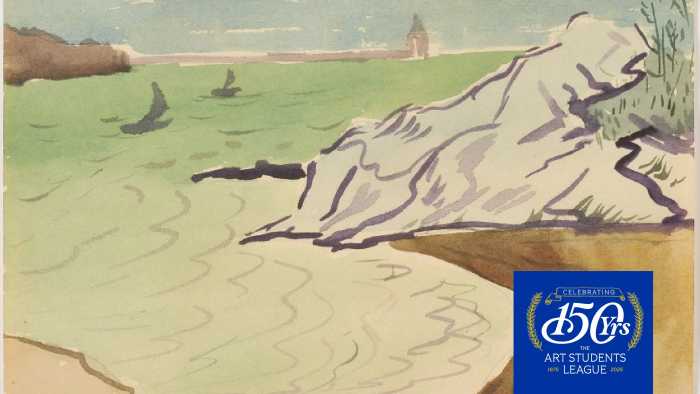In December of 1982, police were looking for a missing New Jersey boy and they raided a Massachusetts home. They arrested three members of the North American Man Boy Love Association (NAMBLA) and seized hundreds of photos. One picture resembled Etan Patz, a boy who disappeared on his way to school from his Soho home in May of 1979.
At a December 17 meeting, FBI agents from New York and New Jersey, federal and New Jersey prosecutors, and representatives from the New York City Police Department and the US Postal Service drafted search warrants for the New York City apartments of two NAMBLA members. They were executed days later.
In the accompanying media blitz, law enforcement officials, typically speaking anonymously, charged NAMBLA with the Patz disappearance and other, frankly preposterous, crimes.
“There are reports of a phone number you can call and get a child to order,” an anonymous investigator told the Daily News. “You pay thousands of dollars and put in an order for a seven-year-old child with red hair –– the next day he arrives at your door.”
NAMBLA responded in a very uncriminal-like way –– they held a press conference and said that the photo was taken in 1968, several years before the six-year-old Patz was born.
“The media have functioned as an adjunct of the police, rather than as an independent newsgathering and investigative institution,” one NAMBLA member said in a statement then.
The next day, police conceded NAMBLA’s point in an Associated Press story and admitted that Nassau County police had seen the photo in mid-1981 and taken no action. This would not be not the last time that police and the press were wrong about the Patz disappearance.
Most recently, Othniel Miller, a now 75-year-old Brooklyn man who once worked near the Patz home, was all but convicted by much of the press of killing the boy.
Miller made an ambiguous statement to police during an interview, saying, “What if the body was moved?” During his 1986 divorce, his ex-wife accused him of sexually assaulting a young female relative.
Miller has not been charged with any crime related to the Patz case or the relative. His attorney, Michael C. Farkas, said his client had long cooperated with police. But the FBI and the NYPD proceeded to dig up the basement at 127 Prince St., where Miller worked and just a few doors from where Stanley and Julie Patz, Etan’s parents, still live.
A handful of press reports said that the “Leslie/ Lohman Gay Art Foundation,” as the New York Times put it, uses the basement for storage. The Leslie-Lohman Museum of Gay and Lesbian Art is nearby on Wooster Street and was founded 11 years after Patz disappeared, but in the minds of a few reporters, the museum was somehow implicated. That speaks to the power of such cases.
“The culture wants a resolution,” said Paula S. Fass, a history professor at the University of California at Berkeley and the author of “Kidnapped: Child Abduction in America,” a 1997 book that explored how such kidnappings were understood and represented in the 19th and 20th centuries. “I think that’s what’s going on here. We can’t stand not having answer.”
Illustrating another element of the modern understanding of child disappearances, the Times –– just before its mention of Leslie-Lohman –– noted the basement “was also a known meeting place for sexual liaisons at the time”.
“My sense of the Patz case is that it really turned a corner,” Fass said. “The case, coming when it did, seemed to precipitate a whole new perspective that very young people were being taken for sexual purposes.”
Abductions in which a stranger kidnaps a child are rare, but they get a lot of attention from the mainstream press. Typically, a family member, a friend, or someone known to the family is responsible and in nearly 100 percent of the cases, the child is returned alive in less than 24 hours.
For Bill Dobbs, a gay civil libertarian, the Patz case shows the danger of the community appealing to law enforcement.
“When there’s organizing around a crime, it’s possible to put so much pressure on that you destroy somebody,” he said. “There’s lots of things that can make the playing field cockeyed.”
Dobbs has been very critical of gay groups that sought harsh charges against Aaron McKinney and Russell Henderson, the two Wyoming men who killed Matthew Shepard in 1998.
More recently, Dobbs and a number of gay commentators have opposed the charges brought against Dharun Ravi, a Rutgers student who was convicted of spying on his gay roommate, Tyler Clementi, and destroying evidence and witness tampering in the case. Clementi committed suicide within days of the spying.
“This goes right to the heart of anti-violence organizing,” Dobbs said. “They’re not concerned with the problems of the criminal justice system or what happens when one of us is accused of a crime.”
In the Patz case, as in any crime against a child, it is impossible to rouse sympathy for someone who is accused. In 2001, Etan’s parents had him declared legally dead. They then sued Jose Ramos, a now 68-year-old man who is nearing the end of a prison sentence in Pennsylvania for sexually assaulting two boys. Ramos knew the Patz family housekeeper.
Ramos did not have a lawyer, refused to answer some questions in the two depositions he gave in the suit, and could not defend himself against a New York civil suit while in a Pennsylvania prison. He defaulted. The family won a $2 million judgment that is symbolic since Ramos has no money.
Robert M. Morgenthau, who was the Manhattan district attorney from 1975 until 2009, did not find the evidence in the civil suit sufficient to present to a grand jury, much to the frustration of the Patz family. With a new district attorney, Cy Vance, the case was reopened, though any prosecution could be complicated by police now identifying yet another suspect –– Miller. The Prince Street basement search, however, apparently produced no evidence.
A 2009 quote in the Daily News from Stan Patz about Ramos probably best captures the case.
“We’re hoping to get a bunch of New Yorkers up in arms saying, ‘Hang the bastard,’” Patz said. “Get the pitchforks out.”


































